Hello Hive friends.
I found this moth near the patio. It had a broken wing and remained immobile for a long time.
I took the opportunity to take some photos and did some research on the internet.
Hola amigos de Hive.
Encontré esta polilla cerca del patio. Estuvo largo tiempo inmóvil, y tenía una ala rota.
Aproveché para tomarle algunas fotos e investigué en internet.
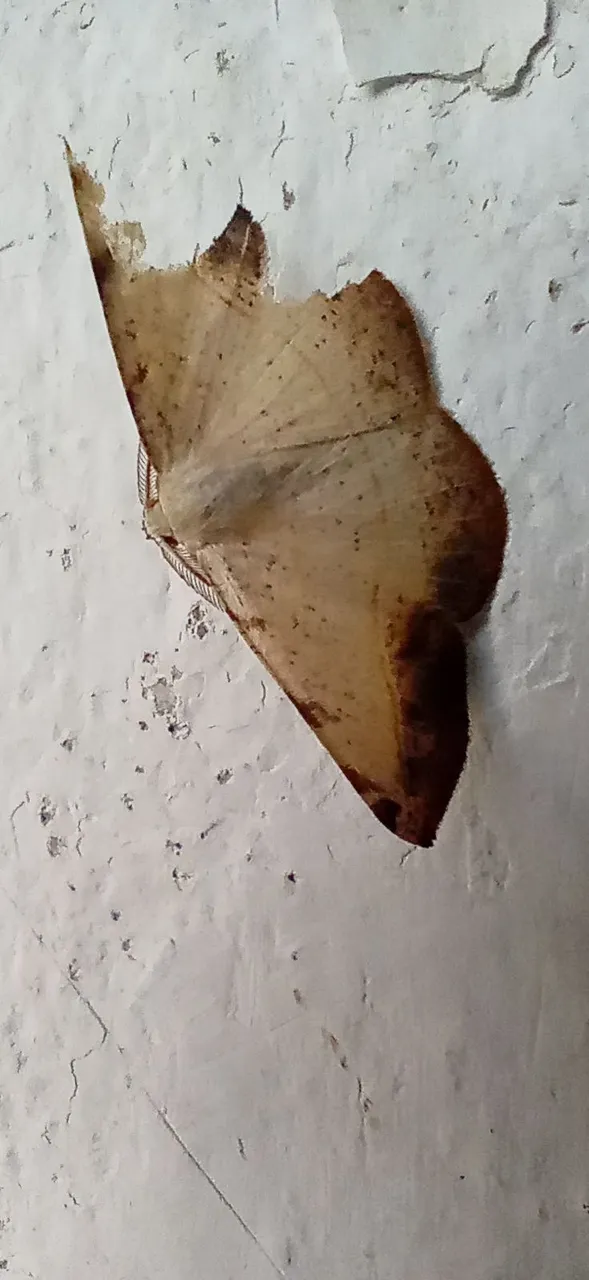
It resembles Patalene olyzonaria, Eusarca confusaria and Eusarca fundaria. Visual coincidences do not allow assigning it to a single species, so I am going to talk about the Geometridae family, to which it can be said with certainty that it belongs.
Se parece a Patalene olyzonaria, Eusarca confusaria y Eusarca fundaria. Las coincidencias visuales no permiten asignarle a una sola especie, así que voy a hablar de la familia Geometridae, a la que sí se puede decir con certeza que pertece.
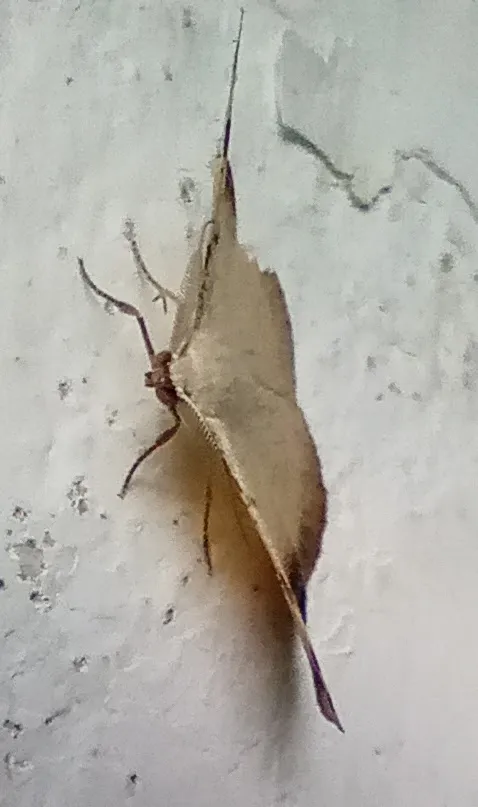
The geometrids (Geometridae) are a family of glossed Lepidoptera of the clade Ditrysia whose caterpillars are characterized by being geomensoras, which means that they move in a similar way to when measured by hands, with the open hand and then the little finger is joined with the thumb. They measure about 23 mm and have generally triangular wings.
Geometridae from the type genus Geometra (Linnaeus), Greek meaning "to measure the earth," referring to the larva, or inchworm, as they move in a looping fashion.
Los geométridos (Geometridae) son una familia de lepidópteros glosados del clado Ditrysia cuyas orugas se caracterizan por ser geomensoras, lo que significa que se mueven en forma similar a cuando se mide a palmos, con la mano abierta y luego se junta el meñique con el pulgar. Miden cerca de 23 mm y son de alas generalmente triangulares.
Geometridae del género tipo Geometra (Linnaeus), griego que significa "medir la tierra", refiriéndose a la larva, o gusano pulgar, mientras se mueven en forma de bucle.

Scientific classification:
Kingdom: Animalia (Animals)
Phylum: Arthropoda (Arthropods)
Class: Insecta (Insects)
Order: Lepidoptera (Butterflies and moths)
Suberfamily: Geometroidea (Geometrid and swallowtail moths)
Family: Geometridae (Geometrid moths)
The wingspan is 21–25 mm. Adults are on wing from April to November. There are two to three generations per year.
The larvae feed on Juniperus species and at times Thuja occidentalis and possibly Pinus.
Clasificación científica
Reino: Animalia (Animales)
Filo: Arthropoda (Artrópodos)
Clase: Insecta (Insectos)
Orden: Lepidoptera (mariposas y polillas)
Suberfamilia: Geometroidea (polillas geometridas y cola de golondrina)
Familia: Geometridae (polillas Geometrid)
La envergadura es de 21 a 25 mm. Los adultos están en vuelo de abril a noviembre. Hay dos o tres generaciones por año.
Las larvas se alimentan de especies de Juniperus y, en ocasiones, de Thuja occidentalis y posiblemente de Pinus.
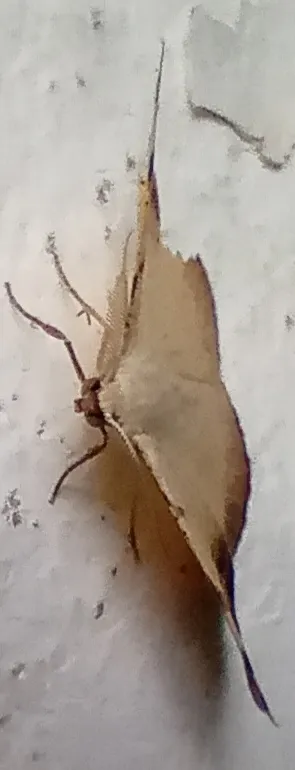
Other Common Names:
Geometer moths
Measuringworms
Inchworms
Loopers
Spanworms
Otros nombres comunes
Polillas del geómetro
Gusanos medidores
Gusanos de pulgada
Loopers
spanworms (gusanos)
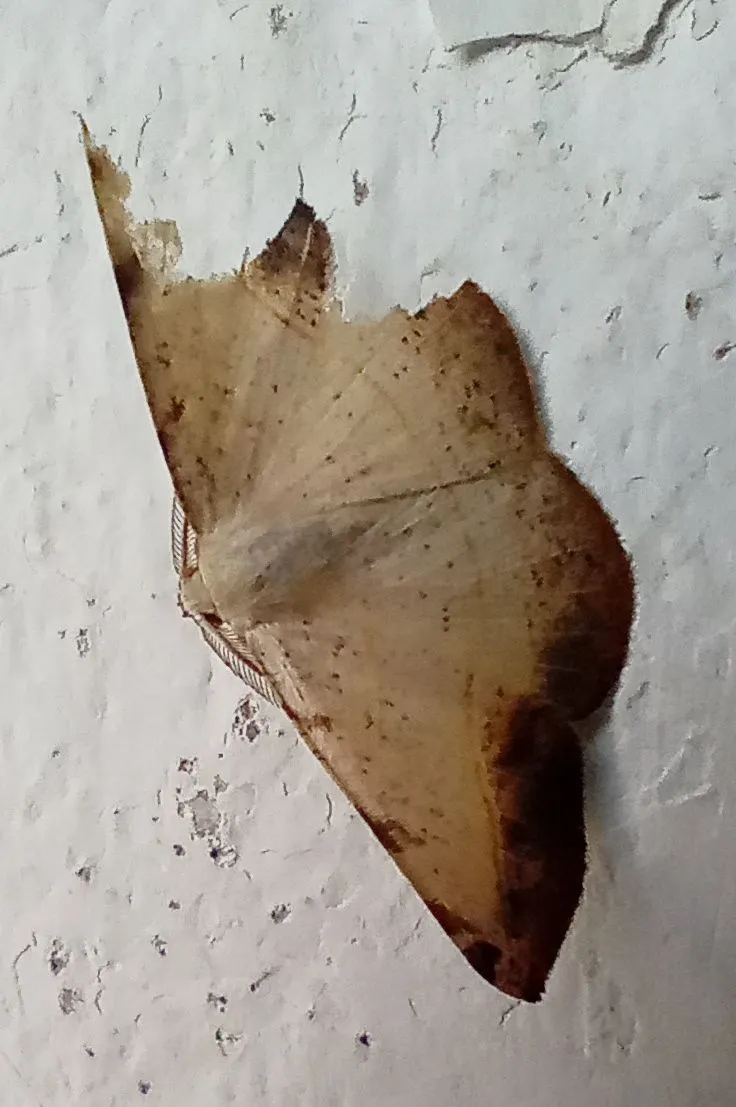
Identification
Adults usually have slender bodies and relatively large, broad forewings, often crossed by thin wavy lines; females of some species are wingless or have flightless atrophied wings. When at rest, many geometrid moths hold their wings away from the body and flat against the substrate (in contrast to most noctuid moths, which tend to fold their wings over their abdomen); some species/genera hold their wings in a characteristic position such as: flat & at right-angles to the body, or inclined 45 degrees above horizontal, or vertically over their back like a butterfly. Forewing cubitus vein appears 3-branched; hindwing subcostal vein bends abruptly downward at base.
Larva - generally have only two pairs of prolegs (at the hind end) rather than the usual five pairs in most lepidoptera; the lack of prolegs in the middle of the body necessitates the peculiar method of locomotion, drawing the hind end up to the thoracic legs to form a loop, and then extending the body forward.
Identificación
Adultos: suelen tener cuerpos delgados y alas anteriores relativamente grandes y anchas, a menudo atravesadas por delgadas líneas onduladas; las hembras de algunas especies no tienen alas o tienen alas atrofiadas no voladoras. Cuando están en reposo, muchas polillas geometridas mantienen sus alas alejadas del cuerpo y planas contra el sustrato (en contraste con la mayoría de las polillas noctuidas, que tienden a doblar sus alas sobre su abdomen); algunas especies / géneros mantienen sus alas en una posición característica como: planas y en ángulo recto con el cuerpo, o inclinadas 45 grados sobre la horizontal, o verticalmente sobre su espalda como una mariposa. La vena del cúbito anterior parece tener 3 ramificaciones; La vena subcostal de las alas traseras se dobla abruptamente hacia abajo en la base.
Larva: generalmente tienen solo dos pares de prolegs (en el extremo trasero) en lugar de los cinco pares habituales en la mayoría de los lepidópteros; La falta de prolegs en el medio del cuerpo requiere el método peculiar de locomoción, estirando el extremo trasero hasta las patas torácicas para formar un bucle y luego extendiendo el cuerpo hacia adelante.
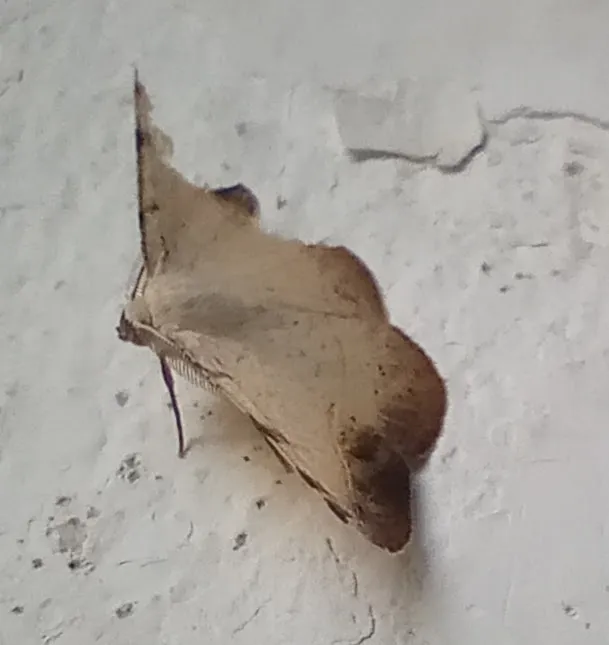
Range
Throughout North America and the world
Habitat
Larvae found on host plants in various vegetated habitats. Adults usually nearby, but most are nocturnal and attracted to light; a number of species are day-flying.
Distancia:
En América del Norte y el mundo
Habitat:
Larvas que se encuentran en plantas hospedantes en varios hábitats con vegetación. Los adultos suelen estar cerca, pero la mayoría son nocturnos y se sienten atraídos por la luz; varias especies vuelan durante el día.

Food
Most larvae feed on the leaves of woody plants (coniferous and deciduous trees, shrubs); some species eat herbaceous plants. Many species are economically important pests of fruit trees, forest trees, and berry crops.
Comida
La mayoría de las larvas se alimentan de las hojas de las plantas leñosas (árboles coníferos y caducifolios, arbustos); algunas especies comen plantas herbáceas. Muchas especies son plagas económicamente importantes de árboles frutales, árboles forestales y cultivos de bayas.
All the pictures were taken by @elentogether, with a Xiaomi Redmi 9C.
For information gathering, articles aboout geometridae in Wikipedia and BugGuide were mainly used.
Thank you very much
Thanks for stopping by to read about my find 🙂
Todas las fotos fueron tomadas bor @elentogrther, con un Redmi 9C de Xiaomi.
Para recopilar información fueron usados principalmente artículos sobre Geometridae de Wikipedia y BugGuide.
Muchas gracias
Gracias bor detenerse a leer sobre mi hallazgo 🙂
*References/ Referencias:
https://en.wikipedia.org/wiki/Geometer_moth
https://bugguide.net/index.php?q=search&keys=geometridae&search=Search
